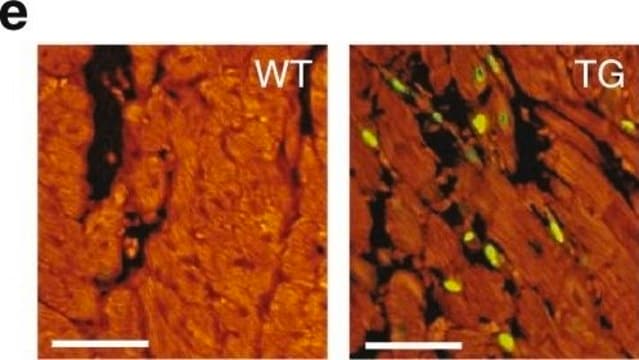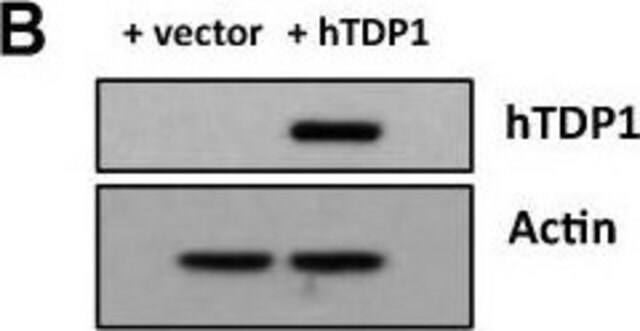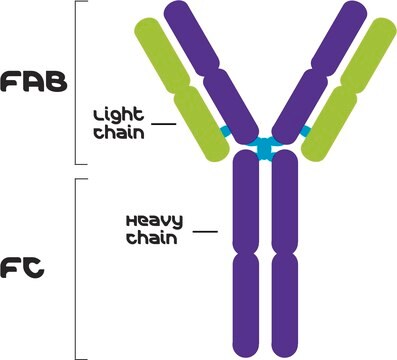Kluczowe dokumenty
SAB4200813
Przeciwciało anty-α Aktynina, mysie przeciwciało monoklonalne
clone BM-75.2, purified from hybridoma cell culture
Synonim(y):
Alfa-aktynina-1, Białko sieciujące F-aktynę, Izoforma cytoszkieletu alfa-aktyniny, Niemięśniowa alfa-aktynina-1
About This Item
Polecane produkty
pochodzenie biologiczne
mouse
forma przeciwciała
purified from hybridoma cell culture
rodzaj przeciwciała
primary antibodies
klon
BM-75.2, monoclonal
masa cząsteczkowa
~100 kDa
reaktywność gatunkowa
human
opakowanie
antibody small pack of 25 μL
stężenie
~1 mg/mL
metody
immunoblotting: 0.5-1 μg/mL using human HeLa cells extract.
immunofluorescence: 5-10 μg/mL using human foreskin fibroblast Hs68 cells.
izotyp
IgM
numer dostępu UniProt
Warunki transportu
dry ice
temp. przechowywania
−20°C
docelowa modyfikacja potranslacyjna
unmodified
informacje o genach
human ... ACTN1(87)
Powiązane kategorie
Opis ogólny
Specyficzność
Immunogen
Zastosowanie
Działania biochem./fizjol.
Postać fizyczna
Przechowywanie i stabilność
Oświadczenie o zrzeczeniu się odpowiedzialności
Nie możesz znaleźć właściwego produktu?
Wypróbuj nasz Narzędzie selektora produktów.
Kod klasy składowania
12 - Non Combustible Liquids
Klasa zagrożenia wodnego (WGK)
nwg
Temperatura zapłonu (°F)
Not applicable
Temperatura zapłonu (°C)
Not applicable
Wybierz jedną z najnowszych wersji:
Certyfikaty analizy (CoA)
Nie widzisz odpowiedniej wersji?
Jeśli potrzebujesz konkretnej wersji, możesz wyszukać konkretny certyfikat według numeru partii lub serii.
Masz już ten produkt?
Dokumenty związane z niedawno zakupionymi produktami zostały zamieszczone w Bibliotece dokumentów.
Nasz zespół naukowców ma doświadczenie we wszystkich obszarach badań, w tym w naukach przyrodniczych, materiałoznawstwie, syntezie chemicznej, chromatografii, analityce i wielu innych dziedzinach.
Skontaktuj się z zespołem ds. pomocy technicznej








